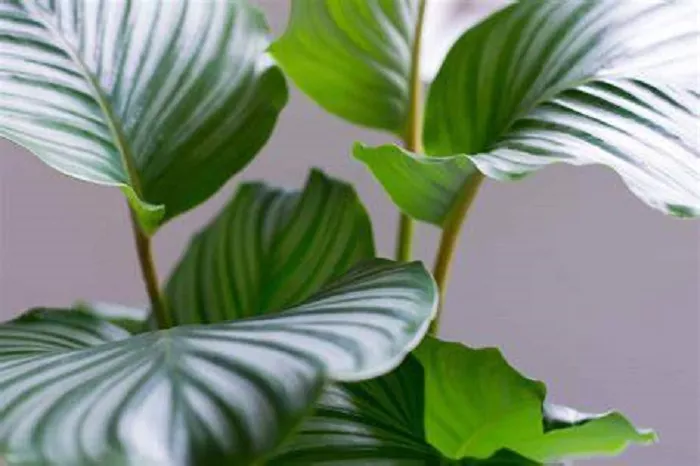Prayer plants, with their mesmerizing foliage and unique movement patterns, have long captivated the hearts of gardening enthusiasts. These plants, belonging to the Marantaceae family, are named for their intriguing habit of raising and lowering their leaves as if in prayer. In this article, we will delve into the diverse types of prayer plants, exploring their distinct characteristics, care requirements, and the charm they bring to any indoor or outdoor garden.
A Brief Introduction to Prayer Plants
Prayer plants are native to the tropical regions of Central and South America, where they thrive in the warm, humid understory of rainforests. Their name stems from the fascinating behavior of their leaves, which fold upwards at night and unfold during the day, resembling hands in prayer. This movement is a natural adaptation to optimize light absorption and water conservation. Beyond their captivating movement, prayer plants boast a wide range of leaf patterns and colors, making them popular choices for both indoor and outdoor gardens.
Popular Varieties of Prayer Plants
Rabbit’s Foot Prayer Plant (Maranta leuconeura var. kerchoveana)
The Rabbit’s Foot Prayer Plant is one of the most beloved varieties, known for its striking foliage. Its leaves are adorned with dark green veins on a lighter green background, resembling the pattern of a rabbit’s foot. This plant thrives in bright, indirect light and prefers well-draining soil. It is also known for its ability to tolerate lower light conditions, making it an ideal choice for indoor spaces. The Rabbit’s Foot Prayer Plant is not only visually appealing but also easy to care for, making it a favorite among both novice and experienced gardeners.
Herringbone Prayer Plant (Maranta leuconeura var. erythroneura)
The Herringbone Prayer Plant is another stunning variety, characterized by its bold, red-veined leaves. The leaf pattern resembles a herringbone, giving the plant its name. This variety thrives in warm, humid environments and requires consistent moisture. It is important to avoid overwatering, as this can lead to root rot. The Herringbone Prayer Plant is perfect for adding a touch of tropical elegance to any room. Its vibrant colors and unique patterns make it a standout addition to any plant collection.
Red Prayer Plant (Maranta leuconeura var. leuconeura)
The Red Prayer Plant is known for its rich, red veins and dark green leaves. This variety is highly sought after for its dramatic appearance. It prefers bright, indirect light and well-draining soil. The Red Prayer Plant is sensitive to temperature fluctuations and should be kept in a stable environment. Its striking foliage makes it an excellent choice for adding a pop of color to your garden, whether indoors or outdoors.
Lesser-Known Prayer Plant Varieties
Stromanthe sanguinea
While not as widely known as the Maranta varieties, Stromanthe sanguinea is a stunning addition to the prayer plant family. This plant features large, ovate leaves with a striking pattern of green, white, and pink. The undersides of the leaves are often a deep red, adding to its visual appeal. Stromanthe sanguinea thrives in bright, indirect light and requires consistent moisture. It is a bit more challenging to care for than some other prayer plants, but its beauty makes it worth the effort.
Calathea
Calathea is often grouped with prayer plants due to its similar leaf movement and tropical origin. Varieties such as Calathea orbifolia and Calathea zebrina are particularly popular. Calathea orbifolia features large, round leaves with intricate silver patterns, while Calathea zebrina boasts striking zebra-like stripes. These plants thrive in high humidity and indirect light. They are excellent choices for adding a touch of tropical flair to your indoor garden.
Caring for Prayer Plants
Light Requirements
Prayer plants thrive in bright, indirect light. Direct sunlight can scorch their leaves, so it is important to place them in a location where they receive filtered light. A north-facing window or a spot with sheer curtains is ideal. If you notice the leaves turning yellow or brown, it may be a sign that the plant is receiving too much direct sunlight.
Watering and Humidity
Consistent moisture is key to keeping prayer plants healthy. They prefer soil that is consistently moist but not waterlogged. Overwatering can lead to root rot, while underwatering can cause the leaves to wilt. It is important to find a balance. Prayer plants also thrive in high humidity. You can increase humidity by placing a tray of water near the plant or using a humidifier. Misting the leaves can also help, but be careful not to overdo it, as this can lead to fungal issues.
Soil and Fertilizer
Prayer plants require well-draining soil to prevent waterlogging. A mix of peat moss, perlite, and potting soil works well. This combination ensures that the soil retains moisture while still allowing excess water to drain away. Fertilizing your prayer plants every two to three months with a balanced, water-soluble fertilizer will help them grow strong and healthy. Be sure to follow the instructions on the fertilizer package to avoid over-fertilizing.
Conclusion
Prayer plants offer a unique and captivating addition to any garden. With their diverse range of varieties and stunning foliage, they bring a touch of tropical beauty to both indoor and outdoor spaces. By understanding their care requirements and addressing common issues, you can enjoy the enchanting presence of these plants in your home. Whether you are a seasoned gardener or just starting your plant journey, prayer plants are sure to delight and inspire.


